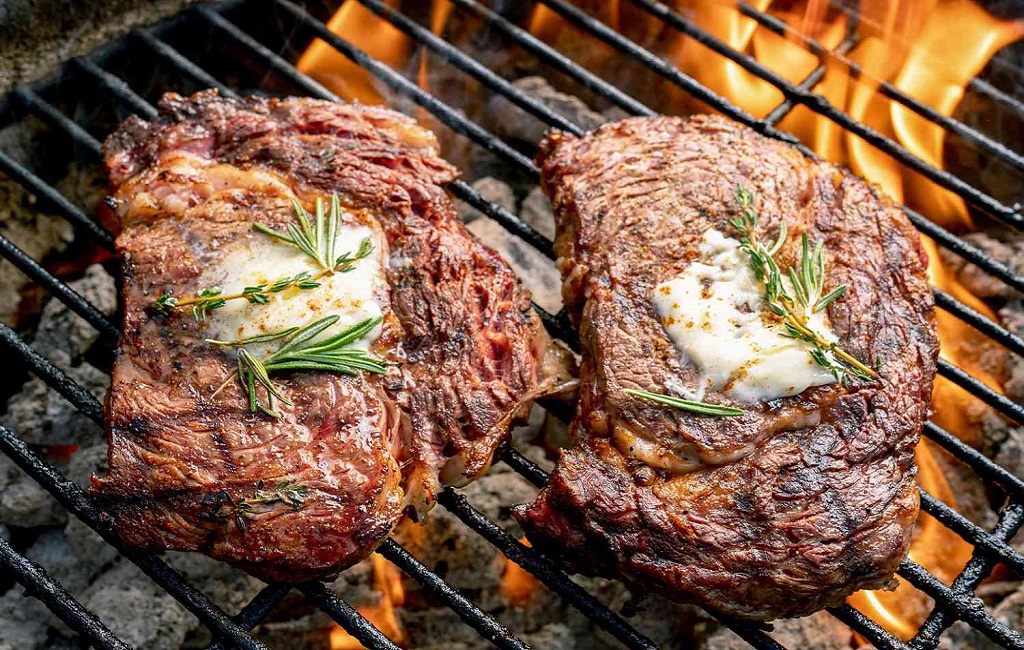Picture this: You cook a big meal, save the extras for later, and freeze them with high hopes. But when you thaw that dish, it turns into a soggy mess. Many people face this issue without realizing simple errors ruin the feel of their food. Freezing leftovers saves time and cuts waste, yet mistakes often change textures from crisp to limp or creamy to grainy. According to the USDA, Americans throw away about 40% of their food, partly due to poor storage methods. A study from the Journal of Food Science shows improper freezing can degrade texture by up to 50% in vegetables. This article dives into common pitfalls, offers fixes, and helps you keep meals tasty. Learn how to avoid these traps and enjoy better frozen foods.
Why Texture Matters in Frozen Leftovers
Texture plays a key role in how we enjoy food. It adds to the overall experience beyond just taste. For instance, a crunchy salad or smooth soup feels right when it matches expectations. However, freezing can alter this balance. Ice crystals form during the process, and they expand, breaking down cell walls in ingredients. As a result, foods lose their original snap or creaminess.
Moreover, people often overlook texture until it’s gone. Think about biting into a thawed strawberry that’s mushy instead of firm. This change discourages many from freezing leftovers altogether. Yet, with proper techniques, you preserve that appealing mouthfeel. Additionally, maintaining texture reduces food waste. Families save money and effort by reheating meals that still delight the senses.
Furthermore, science backs the importance of texture. Research from food technologists explains how moisture migration during freezing leads to sogginess. For example, in breads, water moves to the surface, creating a tough crust. Understanding this helps you make smarter choices. In turn, your frozen dishes stay inviting and nutritious.
Common Mistakes That Ruin Texture
Everyone makes errors when storing extras, but some hit texture hardest. First, recognize these slip-ups to sidestep them. For starters, rushing the process invites problems. Additionally, ignoring food types worsens outcomes. Let’s explore key issues in detail.
Not Cooling Leftovers Before Freezing
You finish dinner and pop hot leftovers straight into the freezer. This seems efficient, but it harms texture. Heat causes steam, which turns into large ice crystals. These crystals puncture food structures, leading to mushiness upon thawing.
Instead, cool items first. Place them in the fridge for a few hours. This step prevents big crystals from forming. For example, soups benefit from this approach. They stay smooth rather than separating.
Moreover, rapid cooling keeps bacteria at bay. The FDA recommends cooling to 40°F within two hours. Follow this rule, and your textures remain intact. Additionally, use shallow containers for faster cooling. This method ensures even temperature drop.
Furthermore, test the temperature with a thermometer. Aim for room temp before freezing. Such care pays off in better results. In short, patience here saves your meal’s feel.
Using the Wrong Containers
Many grab any plastic bag or box for freezing. Yet, this choice affects how food freezes. Airtight isn’t always enough; materials matter too. Plastic that’s not freezer-safe cracks or lets air in, causing freezer burn.
Freezer burn dries out surfaces, turning them leathery. For instance, meats develop tough spots. Switch to glass or heavy-duty bags instead. These resist cold better.
Additionally, overfill containers, and expansion cracks them. Leave space for food to swell. Vacuum-sealing works wonders here. It removes air, preserving moisture.
Moreover, label everything clearly. Note dates and contents. This habit avoids mystery items with degraded textures. In essence, right tools maintain quality.
Freezing Foods with High Water Content Without Preparation
Vegetables like cucumbers or lettuce hold lots of water. Freeze them raw, and they turn limp. Water expands into crystals that burst cells. Thawed, they weep liquid and lose crunch.
Blanch them first to fix this. Dip in boiling water, then ice bath. This deactivates enzymes that soften textures. For example, broccoli keeps its bite this way.
Furthermore, pat dry before freezing. Excess moisture fuels bigger crystals. Spread items on trays for initial freeze, then bag them. This prevents clumping.
Additionally, consider pureeing watery foods. Turn them into sauces or soups. They freeze smoother. Such prep turns potential flops into successes.
Ignoring Portion Sizes
Big batches seem smart, but freezing huge portions leads to issues. You thaw the whole thing, refreeze extras, and texture suffers each time. Repeated cycles create more crystals.
Portion into single servings instead. Use muffin tins for small amounts. Once frozen, transfer to bags. This way, you grab just what you need.
Moreover, flat freezing saves space and thaws evenly. Lay bags flat on shelves. They stack neatly too. For families, this means less waste.
Furthermore, think about meal types. Soups portion easily in cups. Meats slice before freezing. Smart sizing keeps textures fresh.
Freezing Dairy-Based Dishes Improperly
Creamy sauces or yogurts separate when frozen wrong. Proteins and fats break apart. You end up with grainy textures that disappoint.
Stir in stabilizers like cornstarch before freezing. This binds elements. For instance, add it to casseroles. They reheat creamier.
Additionally, freeze in ice cube trays for small bits. Blend thawed cubes into dishes. This minimizes separation.
Moreover, choose low-fat options sometimes. They handle freezing better. Yet, full-fat can work with care. Experiment to find what suits your recipes.
Not Wrapping Foods Properly
Exposed surfaces invite freezer burn. This dries out edges, making them tough. Meats especially turn stringy.
Wrap tightly in foil or plastic. Double layers help. For breads, add paper towels to absorb moisture.
Furthermore, use parchment between layers. This stops sticking. Cookies stay crisp this way.
Additionally, check seals regularly. Air sneaks in over time. Proper wrapping extends shelf life while guarding texture.
Overlooking Freezer Temperature
Your freezer might run too warm. Ideal is 0°F or below. Warmer spots allow partial thawing, reforming crystals bigger.
Check with a thermometer often. Adjust settings as needed. Place items in the back for coldest air.
Moreover, avoid overloading. Crowded freezers warm up. Organize for air flow. This keeps consistent cold.
Furthermore, defrost regularly. Frost buildup insulates poorly. Clean units maintain optimal conditions.
Freezing Fried or Crispy Foods Without Care
Fried chicken or tempura loses crunch in the freezer. Moisture softens coatings.
Flash-freeze on trays first. This sets the exterior. Then bag them.
Additionally, reheat in ovens, not microwaves. Dry heat revives crispness. Air fryers work great too.
Moreover, coat with cornstarch pre-freeze. It absorbs extra moisture. Such tricks restore that satisfying bite.
Neglecting to Label and Date
Old leftovers mystery-thaw into unknowns. Textures degrade over months.
Label with dates and names always. Use permanent markers. Rotate stock, using oldest first.
Furthermore, set reminders for checks. Discard after three months usually. This prevents texture loss.
Additionally, note thawing instructions. Proper methods preserve quality. Good habits ensure enjoyable meals.
Thawing Mistakes That Stem from Freezing Errors
Though focus is freezing, poor prep affects thawing. Quick microwave thaws create uneven textures.
Plan slow thaws in fridges instead. This melts crystals gently.
Moreover, submerge in cold water for faster safe thaws. Change water often.
Furthermore, avoid room temp thawing. Bacteria grow, and textures suffer. Link back to good freezing for best results.
How Freezing Works and Affects Food Structure

Freezing preserves by slowing spoilage. Water turns to ice, halting bacteria. Yet, this process impacts cells.
In meats, crystals poke muscle fibers. Thawed, juices leak, drying meat.
Vegetables have rigid walls that burst. They soften as a result.
Additionally, emulsions in sauces break. Fats separate from liquids.
Understanding this guides better practices. Quick freezing forms small crystals, less damage.
Home freezers work slower than commercial ones. So, prep foods to minimize harm.
Moreover, research from food engineers shows blast freezing ideal. Mimic it by spreading thin layers.
In turn, your leftovers retain appealing feels.
Best Practices to Preserve Texture
Avoid mistakes by following tips. First, choose freezable foods wisely. Dense items like stews fare better.
Prep ingredients separately sometimes. Freeze veggies, then add to dishes.
Additionally, use quality ingredients. Fresh starts lead to better frozen results.
Moreover, test small batches. Learn what works for your freezer.
Furthermore, invest in good tools. Vacuum sealers pay off.
Incorporate these for superior outcomes.
Choosing the Right Foods to Freeze
Not all leftovers freeze well. Avoid salads or custards.
Opt for casseroles, chilis, or baked goods.
For example, pasta sauces freeze smooth if noodle-free.
Additionally, fruits work in smoothies post-freeze.
Match foods to methods for success.
Pre-Freezing Preparation Techniques
Chop uniformly for even freezing. Small pieces thaw quicker too.
Blanch veggies always. It locks in color and crunch.
Moreover, marinate meats pre-freeze. Flavors infuse better.
Furthermore, cool completely. Rush leads to woes.
These steps elevate your game.
Optimal Freezing Methods
Freeze fast to form tiny crystals. Use metal trays for heat transfer.
Layer flat in bags. Remove air thoroughly.
Additionally, set freezer to lowest temp briefly.
Monitor progress. Adjust as needed.
Such methods guard textures.
Related:
Yoplait Yogurt for Muscle Recovery
What Makes Robiengr Passion Fruit Plants Special?
Storage Duration Guidelines
Most items last 2-3 months optimally. Beyond, textures fade.
Meats hold longer, up to 6 months.
Vegetables shorter, around 8 weeks.
Rotate stock diligently.
Follow these for peak quality.
Reheating Tips to Restore Texture
Oven reheating crisps exteriors. Cover to retain moisture.
Stir midway for even heat.
Additionally, add broth if dry.
Air fry for crunch.
These revive frozen foods nicely.
The Science Behind Texture Changes
Ice nucleation starts the process. Crystals grow, disrupting structures.
In proteins, denaturation occurs. They unfold, changing mouthfeel.
Carbs in breads retrograde, stiffening.
Fats oxidize, turning rancid.
Studies from the Institute of Food Technologists detail this.
Control variables to minimize effects.
Quick freeze, slow thaw works best.
Apply science for practical gains.
Real-Life Examples and Case Studies
Sarah froze her lasagna hot. Thawed, layers separated soggily.
She learned to cool first. Next batch stayed firm.
A study on frozen berries showed blanching reduces mush by 30%.
Chefs swear by vacuum sealing for meats.
These stories illustrate fixes.
Moreover, home cooks report better results with portions.
Learn from others’ trials.
Environmental and Health Benefits of Proper Freezing
Reduce waste, help the planet. Frozen leftovers cut landfill contributions.
Nutrients preserve well when done right.
Additionally, save energy by batch cooking.
Health-wise, avoid spoilage risks.
Proper methods support wellness.
Furthermore, enjoy varied diets affordably.
Embrace freezing smartly.
Advanced Tips for Expert Freezers
Use dry ice for ultra-fast freezing. It forms minuscule crystals.
Experiment with herbs in oil cubes.
Moreover, freeze doughs shaped.
Track freezer inventory apps.
These elevate your skills.
Additionally, join food preservation communities.
Share and learn tips.
Conclusion
Freezing leftovers offers convenience, but mistakes harm textures. Cool foods first, use right containers, prep watery items, portion wisely, handle dairy carefully, wrap well, maintain temps, care for crisps, label diligently, and thaw properly. These steps prevent mushy or tough results. Science and examples show proper methods work. Start applying them today for better meals. Take action now: Review your freezer habits and try one new tip this week.
FAQs
What causes mushy textures in frozen vegetables?
Water expands into large crystals, bursting cells. Blanching and quick freezing help prevent this.
Can I freeze creamy soups without separation?
Yes, add stabilizers like flour. Stir well before freezing and reheat slowly.
How long can I freeze meat without texture loss?
Up to 4-6 months in airtight wraps. Beyond that, freezer burn toughens it.
Why does bread become stale after freezing?
Moisture migrates to the surface. Wrap tightly and thaw in ovens to revive.
Is refreezing leftovers safe for texture?
Avoid it; each cycle creates more crystals. Portion to thaw only what’s needed.
References
- https://www.usda.gov/media/blog/2020/11/23/freezing-food-safety
- https://www.fda.gov/food/buy-store-serve-safe-food/refrigerating-and-freezing-food
- https://ift.onlinelibrary.wiley.com/doi/full/10.1111/1541-4337.12650
- https://www.foodnetwork.com/how-to/packages/help-around-the-kitchen/how-to-freeze-leftovers




